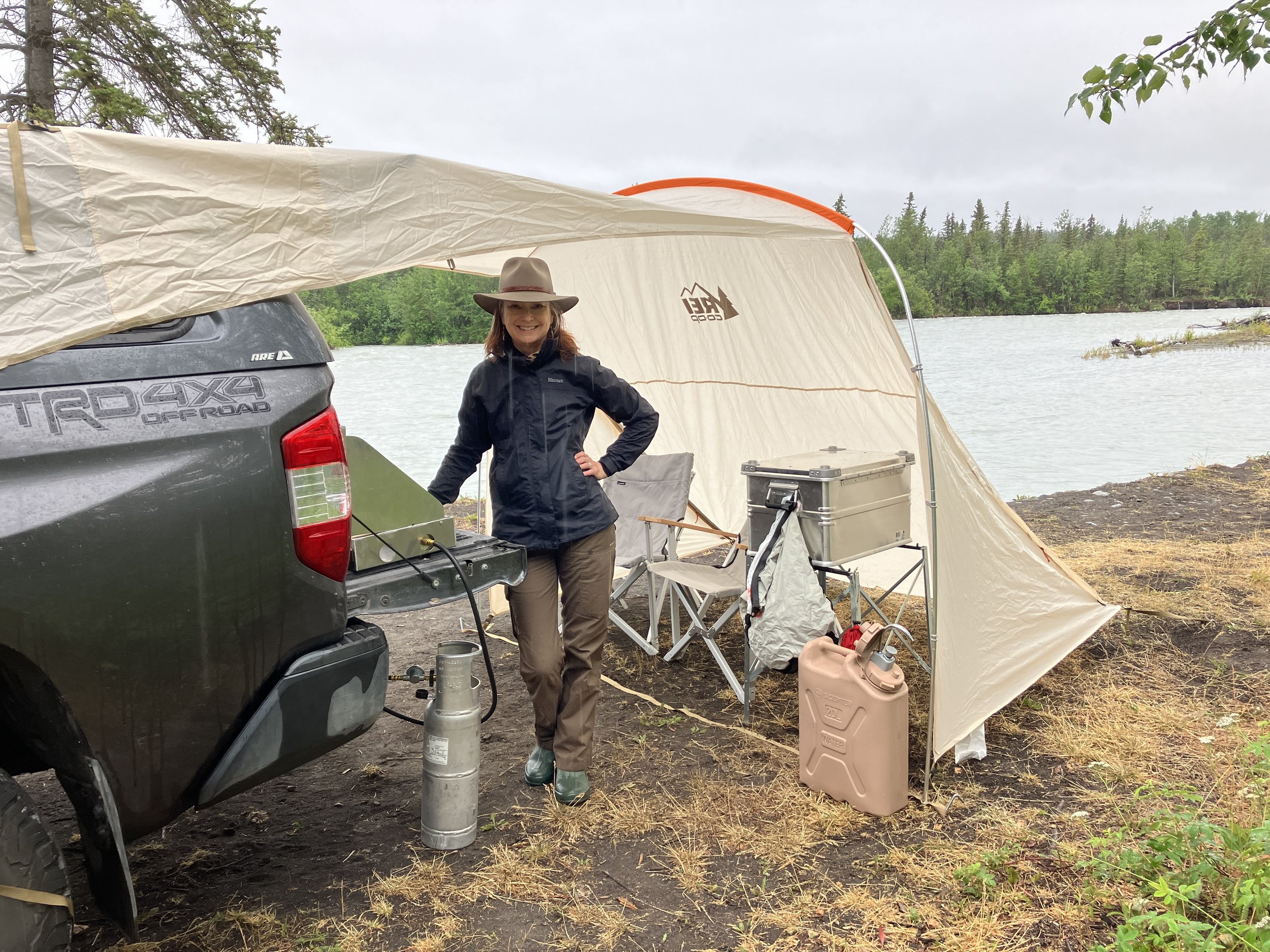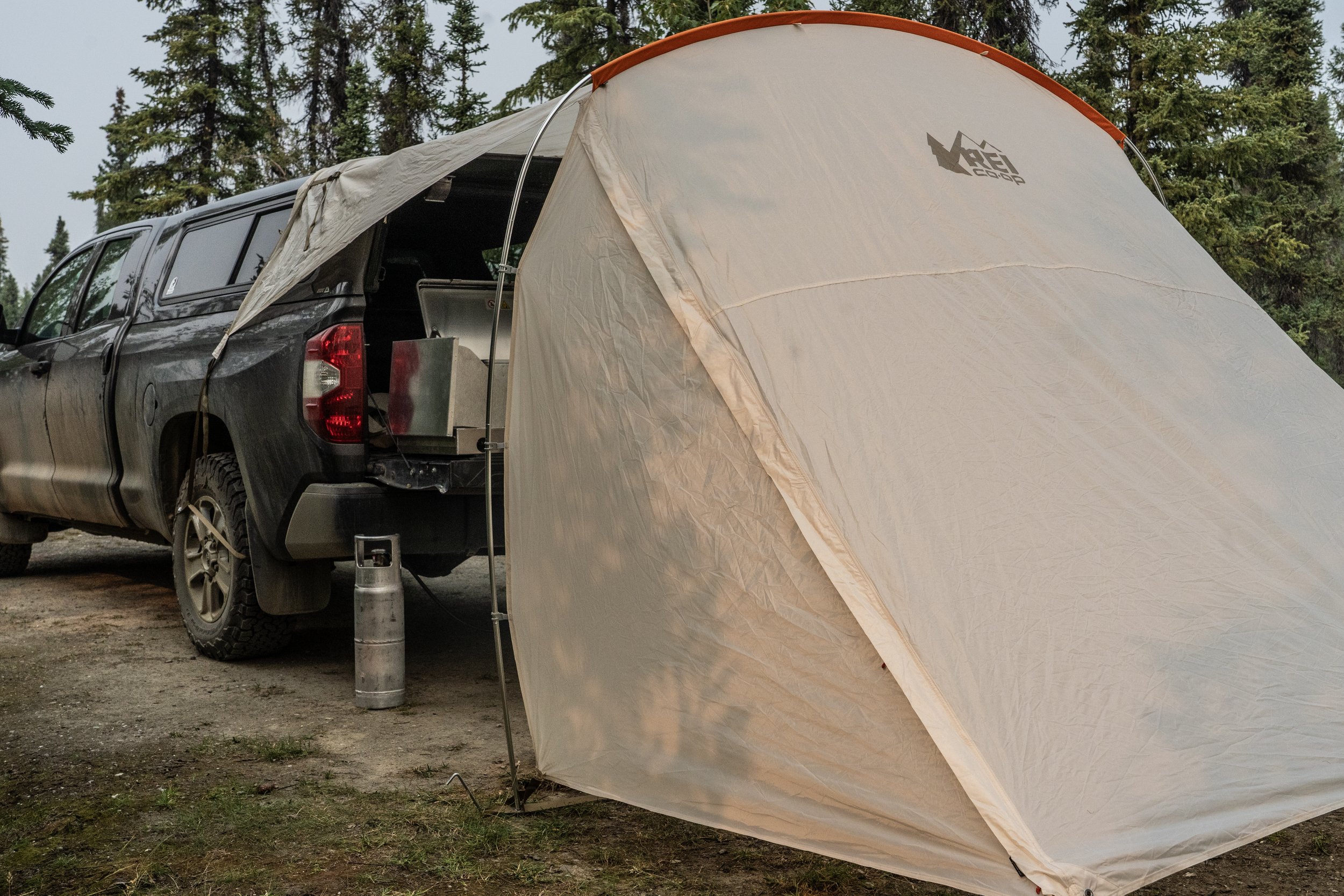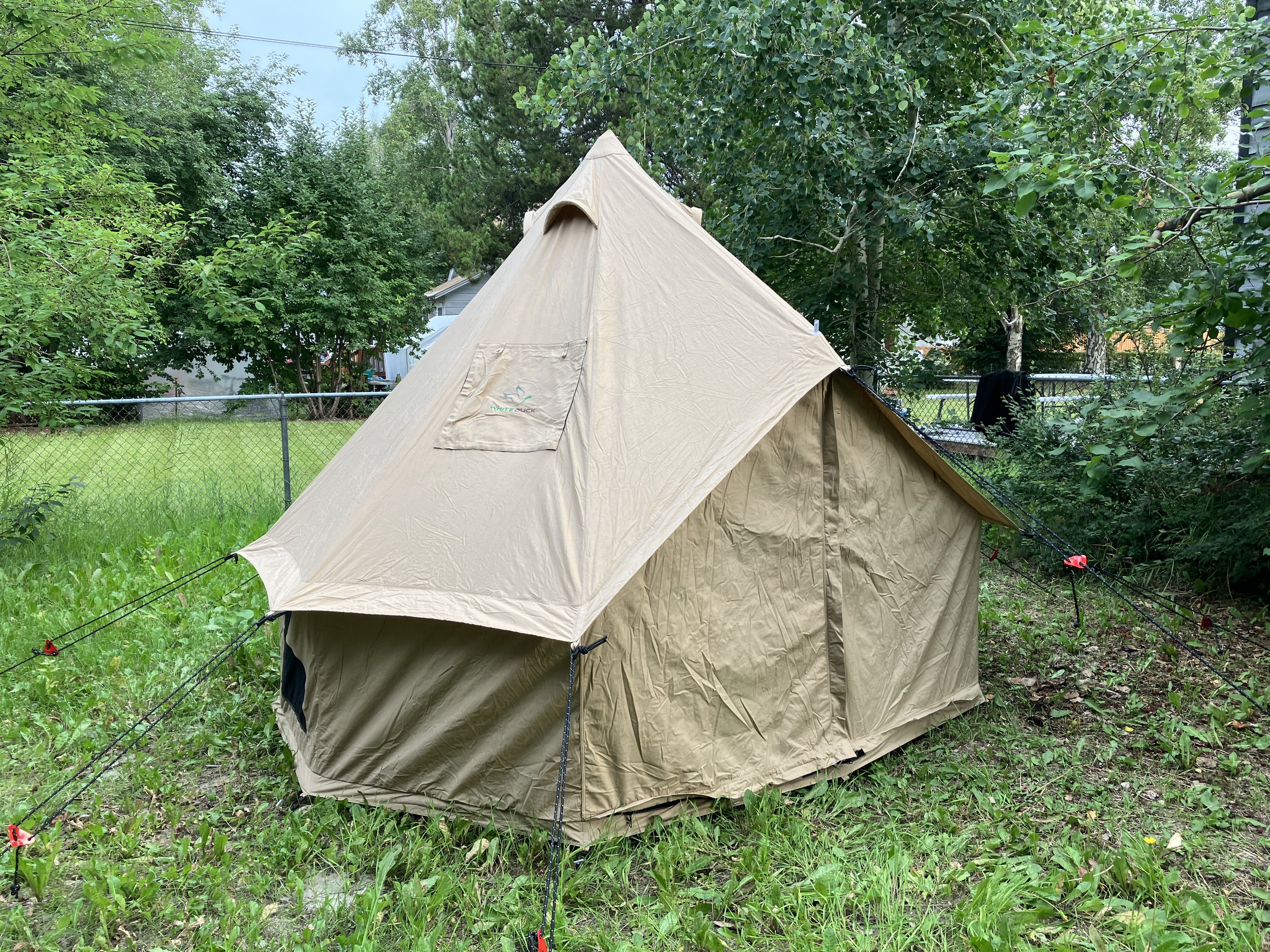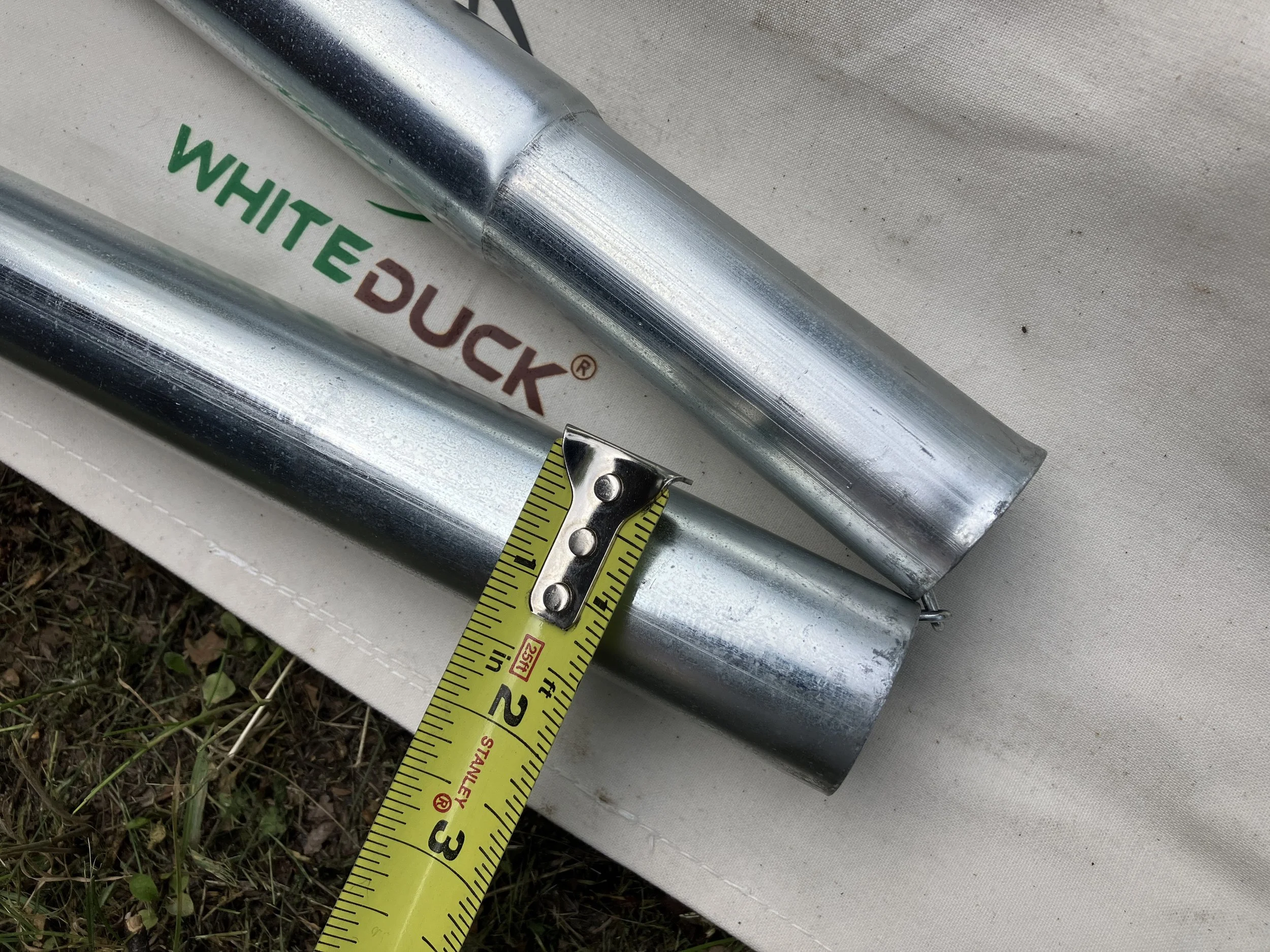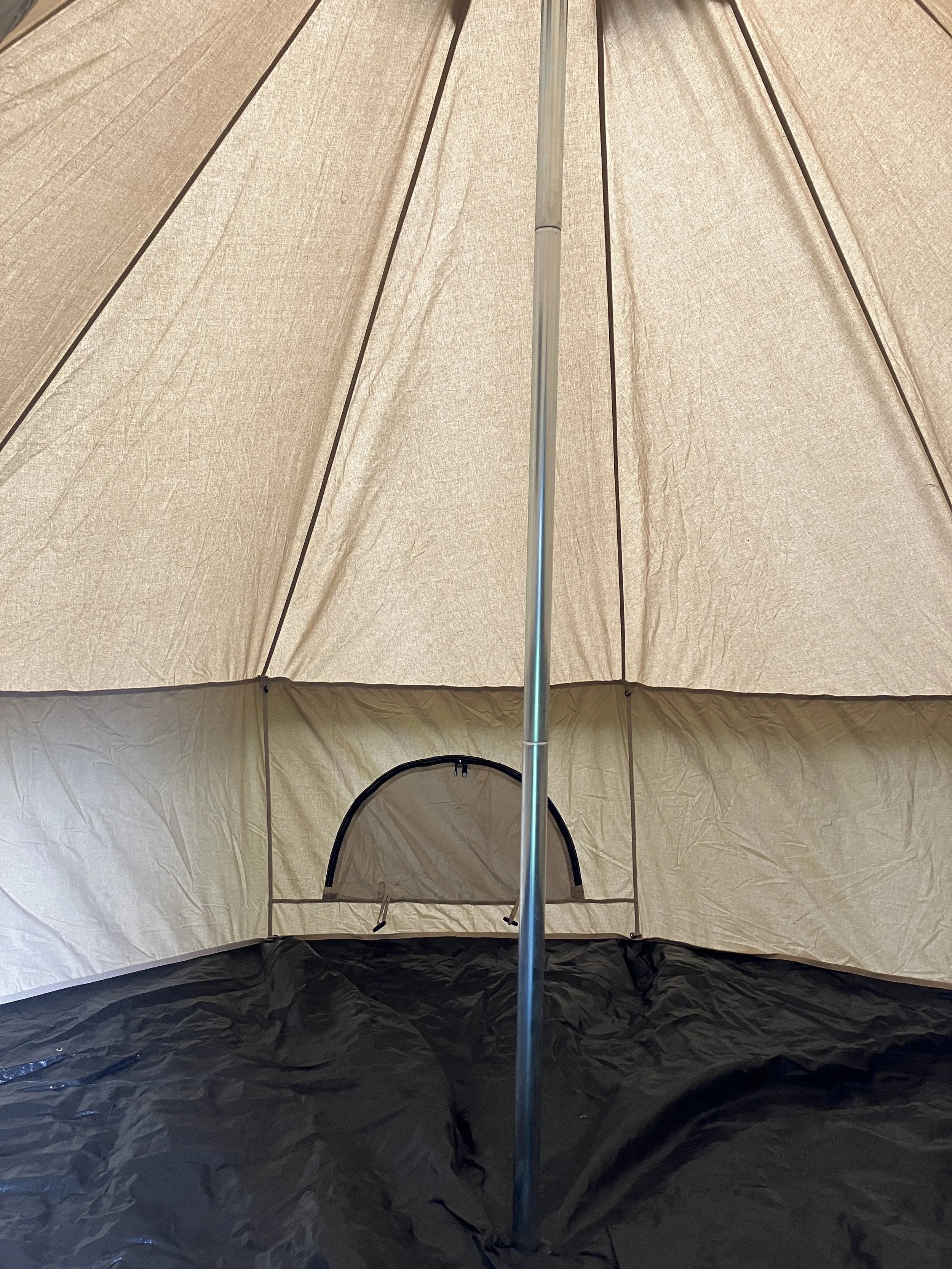
Overland Tech and Travel
Advice from the world's
most experienced overlanders
tests, reviews, opinion, and more
Artificial rain gutters from Lkonwee
I needed to mount our Yakima rack to the fiberglass A.R.E. shell on our Alaska Tundra, and since our Yakima towers have standard rain-gutter clamps, I needed artificial rain gutters. After some searching, I decided on a set from the oddly named Lkonwee on Amazon. They weren't cheap at $52, but after installing them, I'm convinced I actually got an excellent buy.
The brackets can be mounted vertically on the side of the shell, or horizontally on the roof. I chose side mounting to keep the overall height of truck and boats as low as possible.
The brackets came with full-size backing plates for strength, and were nicely powder-coated, with matching black-anodized hardware. The square-shouldered carriage bolts fit through square holes in the brackets, meaning installation is a one-person job since you don't need anyone on the the outside holding a wrench on the head of the bolt. It also makes for a much cleaner appearance.
The gaskets, too, were excellent, with a double ring around the bolt holes and a nice raised perimeter.
The gutter itself is deep and secure, and two small raised bits on the bottom would help prevent the rack sliding if you got hit by a big gust of wind or had to panic brake. Well-recommended.
One installation note: Our shell is lined with an ozite-type material, which wasn't completely glued down where I drilled the first hole, with the result that it bunched up and twisted around the drill bit, leaving a fat wrinkle no matter what I did to push it back into shape. For the remainder of the holes I was careful to barely drill through the fiberglass, then poke a hole in the carpet with an awl.
Lkonwee brackets are on Amazon here.
Get one while you can: The REI Trailgate
Last year Roseann drove our inherited RAV4 up through Idaho and into Montana and Wyoming to speak at the Northern Rockies Nature Journaling Conference and then run one of her field arts classes at the historic Spear-O-Wigwam guest ranch in the Bighorn Mountains. To provide shelter from sun and rain while camping she bought a “Trailgate” vehicle shelter from REI. Not only did it serve her well, it survived a direct hit from a very large section of a tree during a windstorm, winding up only slightly cock-eyed. She came back completely sold on the product, and we brought a second one to Alaska to use with our Tundra. After two trips with it up here, I’m sold as well—and I just read it is being discontinued and is on sale at REI for a pittance: $104.
The Trailgate uses a single tensioned aluminum pole of substantial 12.8mm diameter. It can be anchored in calm donditions with just two takes at the back, in addition to the straps that connect it to the vehicle via the wheels—either wrapped around the rear tires or threaded through the wheels. (You could also simply stake the ends to the ground alongside the vehicle.) The fabric is UV-resistant polyester, and the total covered area is about 100 square feet. With a tailgate kitchen and chairs placed under the arch of the canopy, we had plenty of room to cook, eat, and relax while staying out of a drizzle camped next to the Klutina River. The canopy drained perfectly. If you don’t need full coverage, the back panel can be unzipped and rolled up.
We found that the Trailgate fit the full-size Tundra better than it did the RAV4, although it was perfectly functional on the smaller vehicle. If you’re in the market for a shelter of this type, grab one while you can.
REI is here.
White Duck's Regatta bell tent—affordable, roomy, and stylish too
Although I have tested and used—and enjoyed—many models and styles of roof tent, I strongly prefer ground tents for overland travel.
Why? Several reasons. First is roominess. Even the biggest roof tent is no more spacious than a large backpacking tent, while the ground tents I like have standing headroom and space for full-size cots (which allow luggage to be stored underneath) plus a table and, depending on the floor size, chairs. You can cook inside if needed, so if inclement weather—say blowing rain—keeps you cooped up for a day or more, you can still function, and even enjoy yourself. Sure, a roof tent can be augmented with a “mullet,” as a friend refers to them—a ground extension with standing room—but they’re still cramped for anything but changing clothes.
Second is weight. The lightest roof tent we ever owned was a clamshell carbon-fiber model from Autohome. At the time (2008) it cost almost $4,000 dollars; it was a . . . cozy . . . fit for two, and yet it still weighed 90 pounds—in addition, of course to the weight of the roof rack needed to support it. Most roof tents weigh far more. Yet the heaviest ground tent I’ve owned, a ten-foot by ten-foot Springbar Traveler, weighed 72 pounds total, and the tent in question today weighs 51 pounds.
Ah, you say, but one doesn’t have to deal with the weight of the roof tent each time it’s deployed. Quite true and a fair argument, but it brings up my next point: weight placement. A roof tent’s weight is carried in the worst possible place, atop the vehicle, where it (and its roof rack support) significantly affects the vehicle’s center of gravity. The total can effortlessly exceed 200 pounds, even if you don’t add the de rigueur jerry cans. I remember on a trip Roseann and I helped lead along the Continental Divide, one very newly restored FJ60 was equipped with a roof tent, and a rack that proved to have seriously flawed gutter-mounted brackets, which began self-destructing on the first day. Eventually it got so bad we removed the entire rack and tent and strapped it down to the massive contractor’s rack atop our support truck. At the end of the first day without the rack and tent, the owner came up to me and said, “Wow, it sure handles better without that weight up there.” And this is not to mention the significant aerodynamic drag added by a rack and tent. Again, a roof-tent fan can legitimately argue for the space saved inside the vehicle, but the cost is steep.
Finally there’s the actual price. The most expensive ground tent we’ve owned was that U.S.-made Springbar, which currently retails for $1,400. A high-quality roof tent is easily double that or more. The savings is more than enough to add cots and very nice sleeping bags—probably the table and chairs as well.
I could mention other issues with roof tents—the hassle of midnight pee breaks, the boat-in-a-storm feel rocking back and forth in a high wind atop a base equipped with springs. But for now I’ll rest my case.
Favorite ground tents in the past include that classic, canvas Springbar Traveler, a clever, stable, and roomy design now so shamelessly copied by Chinese-made pretenders that the company had to introduce its own imported line to compete. (Springbar’s owners endeared themselves to me forever years ago after they sent me a demo unit to review and, when I called to arrange shipping it back, asked me to donate it to a local Scout group instead.) I also like the Black Pine Turbo Tent with its integrated, jointed poles that allow pitching of the frame and canopy in a couple of minutes (although the fly is separate). And I have a soft spot for the Australian OzTent and its 30-second deployment, although the stowed tent is too long to fit inside most vehicles.
I’ve just added a new one to that favorites list: the White Duck Regatta bell tent.
I’ve long been intrigued by the bell tent design—as contrasted to a square wall tent—for a few reasons. The shape is more naturally aerodynamic than a flat-sided tent, and it doesn’t matter if the wind changes direction. The central pole is under nothing but compression stress, which renders it virtually immune to bending or breakage. The conical roof effectively sheds rain and snow. And with proper peak venting condensation should be minimal.
So when Matt Glass, a longtime industry representative, contacted me with the offer of the White Duck Regatta, I jumped at the chance. Since Roseann and I were planning a recce trip up Alaska’s Dalton highway, we’d have a perfect opportunity to put it to use. We chose the ten-foot model as a reasonable compromise between space and weight/bulk. Total weight of the ten-foot version is 51 pounds in its canvas duffel, but removing the pole bag and stake bag first makes it much easier to handle. The Regatta is also available in 8, 13, 16, and 20-foot diameters.
First trial pitch took 20 minutes. Note flap over stove jack, and peak vents.
The Regatta tents are all made from single-walled 8.5-ounce cotton duck, UV-treated canvas, in your choice of three earth-toned colors. This material sheds moisture the old-fashioned way: The fibers swell when wet and effectively block water penetrating. Thus no fly is needed, reducing weight and complexity. Cotton canvas, being heavier per unit area than nylon or polyester, is also more naturally resistant to flapping, yet without the fly it also creates a brighter interior. The Regatta incorporates a heat-proof stove jack for winter camping. The floor is sewn-in polyethylene—tough, completely waterproof, and easily cleanable with a sponge.
The center pole of the Regatta is a massive 1.5 inches in diameter—neither you nor the weather gods will bend this thing. It incorporates a steel loop near the top for hanging a lantern. The single door pole is an inch in diameter. I was overjoyed to see the tent’s outside perimeter stakes were J-shaped rebar—heavy but indestructible. The floor perimeter stakes, which aren’t under significant tension, were lighter round steel pegs which I nevertheless replaced with hardware-store 8-inch nails. The kit even includes a soft-faced no-bounce mallet. (I replaced this too, with a two-pound sledge, partially because the nail heads would have destroyed the face of the included hammer.)
Center pole is 1.5 inches in diameter. The sections are joined by elastic cord, connected by chain at the joints to prevent chafe.
Pitching is simple. Lay out the tent (door closed) and push in the floor’s perimeter pegs, stretching the floor to shape. Open the door, locate from the outside the cone-shaped receptacle in the canopy for the center pole, insert the top of the pole from the outside, then walk in the bottom and set in place. Insert the door pole, then stake out and tension the outside perimeter stakes. My first attempt took no more than 20 minutes; I soon had it down to a bit over 10 without rushing.
Three arched screen windows, the screen door, and three peak vents allow good ventilation and should minimize condensation. There is over seven feet of headroom around the center pole; the walls are 2’7” tall in the ten-foot model.
Single-wall design creates a bright interior. Floor is impermeable polyethylene.
One downside of the nonagonal shape of the Regatta is that cots won’t snug up tight against the interior walls, as they do in a wall tent. There’s a space left behind them—which of course you can use for storage. I found the best way to arrange two cots was to angle them in an inverted V toward the back of the tent, heads together. This left plenty of room around the pole and in front. Of course depending on your cots you could fold them away during the day. Or if, God forbid, you are sleeping on the floor like savages, just roll up your bag and pad.
Another downside to the bell tent is that you need about a 20-foot diameter circle to pitch the ten-foot model, to ensure the perimeter stakes are out far enough to pull the walls erect. I’ve mused on hacking this by fabricating individual poles for the wall guy-out points, which would enable staking the perimeter lines much closer. But so far I haven’t had trouble finding a large enough pitching area.
The Regatta performed perfectly on our Dalton excursion. Warm weather meant there were still a few late-season mosquitoes around, but the tent was impregnable. The zippers operate smoothly and more quietly than many other tent zippers of my experience. The canvas door can be tied back for extra ventilation. The optional canvas awning would provide a generous front porch; it’s on my list to obtain, although you could also rig many different tarps to perform the same function, anchored in the middle on the top of the door pole.
The ten-foot Regatta is $700, and I consider it an excellent buy. It’s made in Pakistan.
A last note: This tent just looks right at home in the Alaska bush. We stayed at one BLM camp, and I saw two different passers-by walking their dogs point it out to their companions. Nothing wrong with a little style in addition to function.
White Duck offers free shipping to the lower 48 states. They are part of the Better Cotton Initiative (BCI), a global effort to ensure sustainable cotton production. White Duck is here.
Hint: When using “Search,” if nothing comes up, reload the page, this usually works. Also, our “Comment” button is on strike thanks to Squarespace, which is proving to be difficult to use! Please email me with comments!
Overland Tech & Travel brings you in-depth overland equipment tests, reviews, news, travel tips, & stories from the best overlanding experts on the planet. Follow or subscribe (below) to keep up to date.
Have a question for Jonathan? Send him an email [click here].
SUBSCRIBE
CLICK HERE to subscribe to Jonathan’s email list; we send once or twice a month, usually Sunday morning for your weekend reading pleasure.
Overland Tech and Travel is curated by Jonathan Hanson, co-founder and former co-owner of the Overland Expo. Jonathan segued from a misspent youth almost directly into a misspent adulthood, cleverly sidestepping any chance of a normal career track or a secure retirement by becoming a freelance writer, working for Outside, National Geographic Adventure, and nearly two dozen other publications. He co-founded Overland Journal in 2007 and was its executive editor until 2011, when he left and sold his shares in the company. His travels encompass explorations on land and sea on six continents, by foot, bicycle, sea kayak, motorcycle, and four-wheel-drive vehicle. He has published a dozen books, several with his wife, Roseann Hanson, gaining several obscure non-cash awards along the way, and is the co-author of the fourth edition of Tom Sheppard's overlanding bible, the Vehicle-dependent Expedition Guide.



